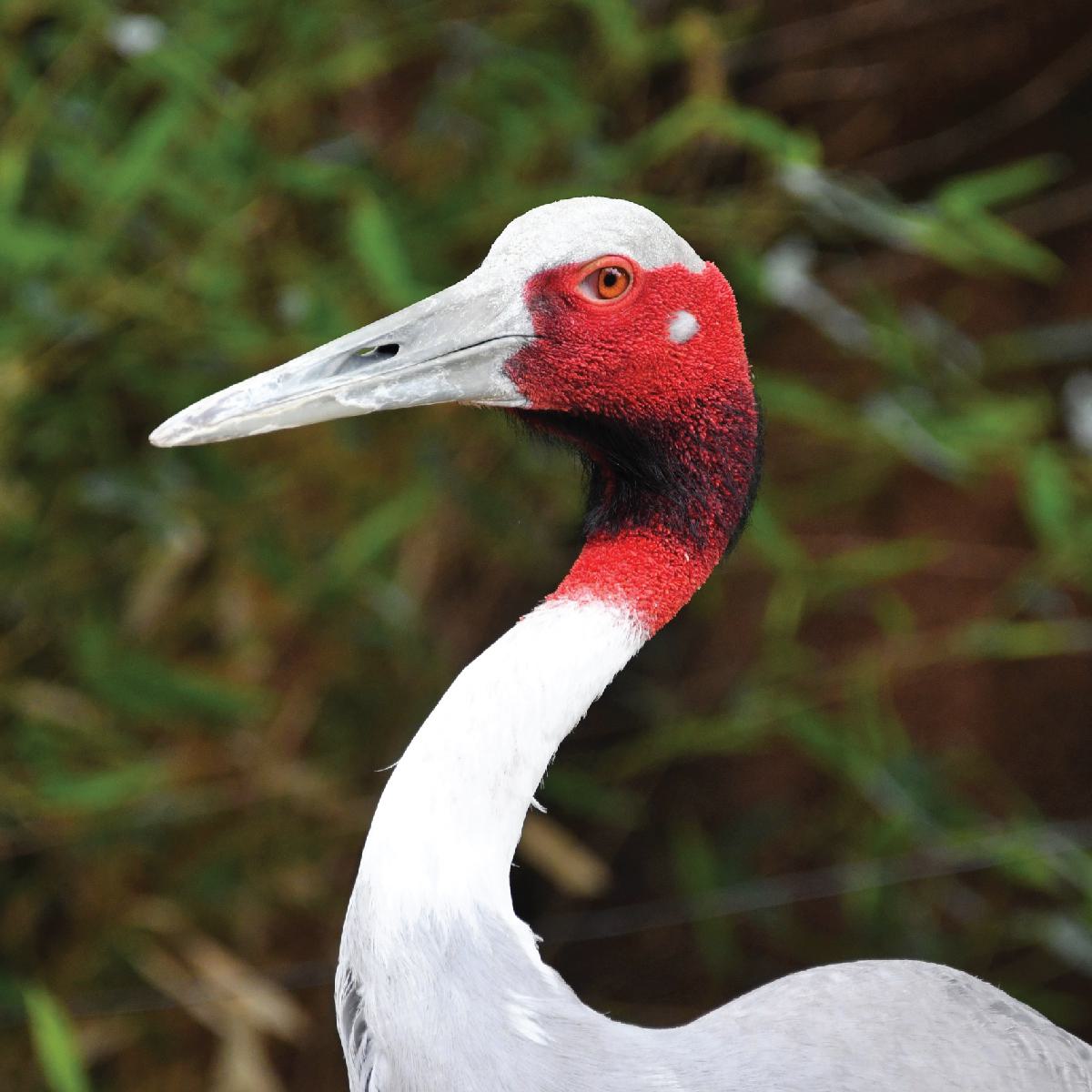
Sarus Crane
Grus antigone
Did you know?
- Sarus cranes are a part of the Gruidae family, which they share with other cranes.
- The name “sarus” comes from the Hindi word, “saras,” meaning, “of a lake.”
- They live in marshes and swamps in Southern Asia, Philippines and Northern Australia.
- They are the largest of all of the crane species.
- A female will lay one to two eggs per clutch.
Adaptations
Sarus cranes can reach a height of six feet, making them the tallest flying bird in the world. Due to their large size, sarus cranes do not have many natural predators. Their long legs and long toes allow them to search for prey in deep, muddy water. Their long, skinny bills also help them snatch small prey.
Courtship and Young
Sarus cranes create elaborate dances filled with head bobbing, neck swinging, wing flapping, and flying during courtship. Males and females will loudly call to each other during these rituals, which have been compared to the sound of elephants trumpeting. Breeding season takes place during monsoon season. Both male and female cranes cooperate in building the nest, incubating the eggs and raising the young. Often, males will incubate the eggs during the day, and females will do so at night.
Threat Level
- Unknown
- Common
- Near Threatened
- Threatened
- Endangered
- Critically Endangered
- Extinct in the Wild
Threatened
The Sarus Crane faces a high risk of extinction in the wild.
Range
Southern Asia, Philippines, northern Australia
Habitat
Marshes, flooded fields, swamps

We care about sarus cranes
The Saint Louis Zoo participates in the Association of Zoos and Aquariums' Species Survival Program for sarus cranes. We also support these birds in Red Rocks at the Zoo. Learn more about how we are helping wildlife around the world: Dedicated to Conservation
Find this animal in Red Rocks

SAINT LOUIS ZOO ZONE
Red Rocks
At Red Rocks, you’ll view some of the world’s most powerful predators living near some of the world’s most graceful prey. Tigers, zebra and giraffes all share the natural rocky boulders and outcroppings as their territory. With shading trees and a bird or two among the mammals, Red Rocks is a great place to spend a day at the Saint Louis Zoo.

